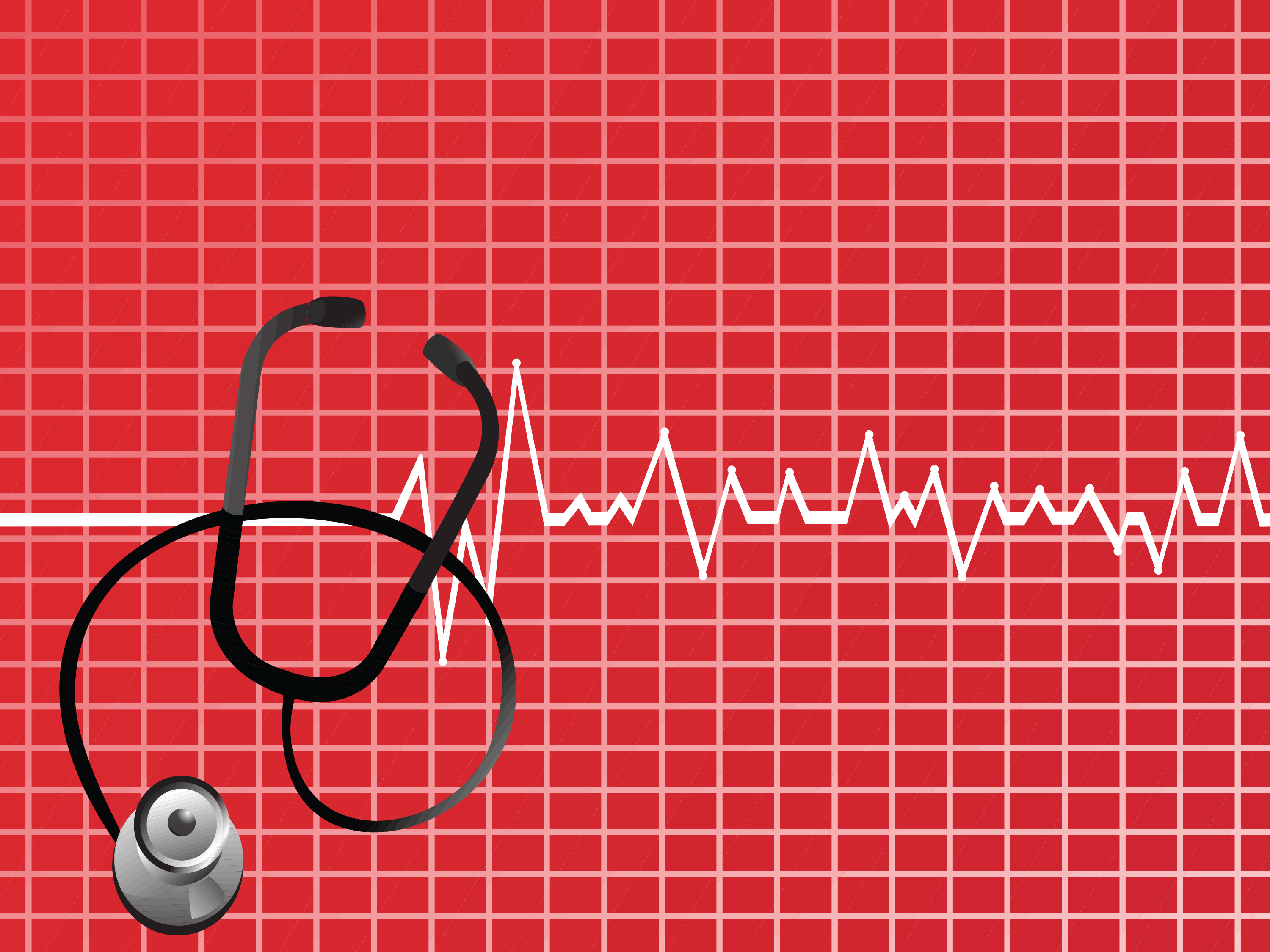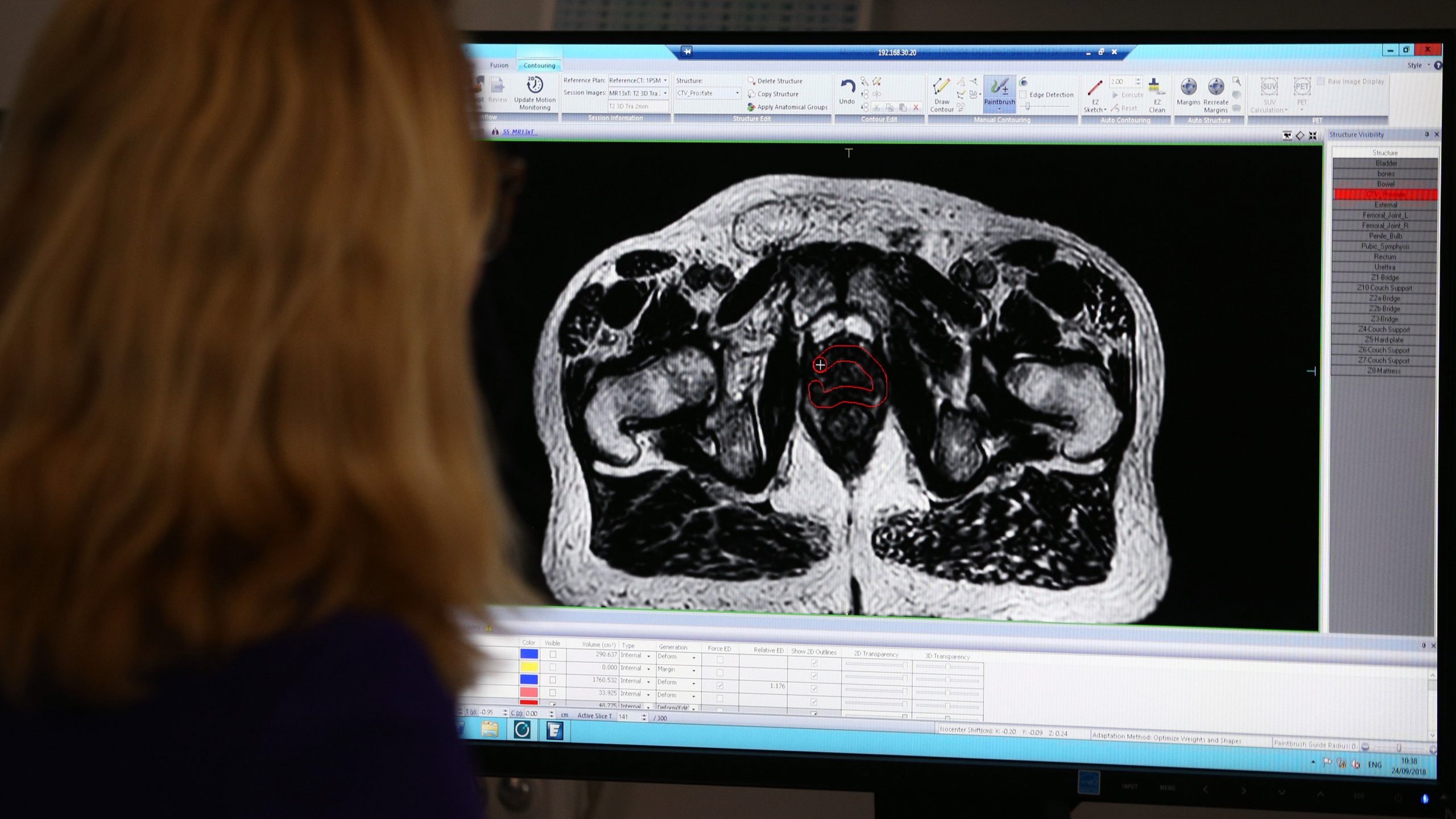Who Can Get Prostate Cancer
Any man can develop prostate cancer during his reproductive age. Some men, however, have an increased risk of getting prostate cancer. The common risk factors include:
- Age: This condition is more prevalent in older men, especially over the age of 50 years.
- Family history: Your chances of developing this cancer increases if someone in your family has, previously, battled with prostate cancer.
- Obesity: Several studies have proved a direct link between being obese and developing prostate cancer. There are also higher chances that cancer may recur if the patient suffers from obesity.
Can Prostate Cancer Be Prevented
Principal investigator Ian Thompson, M.D., sorts out the Prostate Cancer Prevention Trials findings and outlines finasterides risks and benefits
For men diagnosed with prostate cancer, the question of what to do next is probably foremost in their minds. Surgery? Radiation? Wait to see how quickly the tumor grows? But somewhere in the midst of all the soul-searching, many inevitably wonder, Is there anything I could have done to prevent prostate cancer in the first place?
In 1993, a group of researchers embarked on the first large-scale, population-based study to try to find an answer. Nearly 19,000 men, ages 55 and older, enrolled in a seven-year landmark study, dubbed the Prostate Cancer Prevention Trial , to determine whether the drug finasteride could prevent prostate cancer. The choice of finasteride, typically prescribed for the relief of urinary symptoms associated with an enlarged prostate, was based on two observations:
Because finasteride tamps down 5-alpha-reductase type 2, researchers hypothesized that it would lower DHT levels and help prevent prostate cancer.
The Following Protective Factors May Decrease The Risk Of Prostate Cancer:
Folate
Folate is a kind of vitamin B that occurs naturally in some foods, such as green vegetables, beans and orange juice. Folic acid is a man-made form of folate that is found in vitamin supplements and fortified foods, such as whole-grain breads and cereals. A 10-year study showed that the risk of prostate cancer was lower in men who had enough folate in their diets. However, the risk of prostate cancer was increased in men who took 1 milligram supplements of folic acid.
Finasteride and Dutasteride
Finasteride and dutasteride are drugs used to lower the amount of male sex hormones made by the body. These drugs block the enzyme that changes testosterone into dihydrotestosterone . Higher than normal levels of DHT may play a part in developing prostate cancer. Taking finasteride or dutasteride has been shown to lower the risk for prostate cancer, but it is not known if these drugs lower the risk of death from prostate cancer.
You May Like: Dying From Prostate Cancer What To Expect
Prostate Cancer Warning Signs You Should Be Looking Out For
Although prostate cancer is rare before age 40, its important for men of all ages to be aware of its symptoms, because its the second leading cause of cancer deaths in American men. If you recognize the signs early and come in to see Mark J. Kelly, MD, in Santa Monica, California, youll have a much better chance of treating it successfully.
You May Like: Does An Enlarged Prostate Affect A Man Sexually
What Are The Types Of Prostate Cancer

Believe it or not, theres more than one kind of prostate cancer. They differ in how quickly and aggressively they grow. Heres the breakdown:
-
Nearly all prostate cancers are known as adenocarcinomas. This type of cancer develops in gland cells. And, more than nine out of 10 prostate cancers are acinar adenocarcinomas. They affect a type of cell called acini.
Other types of prostate cancer are rare. They include:
-
Small cell carcinoma, a very aggressive cancer which accounts for about 1% of prostate cancers
-
Urothelial carcinoma of the prostate, a deadly, difficult-to-diagnose cancer that accounts for 1% to 4% of prostate cancers
-
Ductal adenocarcinoma, which on its own accounts for less than 1% of prostate cancers, but it can occur with acinar adenocarcinoma
Read Also: Pet Scan And Prostate Cancer
Can Any Foods Lower My Risk Of Prostate Cancer
There is no strong evidence that any individual food can lower your risk of prostate cancer.
You may have heard that certain foods might lower your risk, including pulses, such as beans, peas, lentils and soya foods, and foods containing:
- lycopene such as tomatoes and tomato products
- selenium such as Brazil nuts, fish, seafood, liver and kidney
- vitamin E such as nuts, seeds, wholegrains, green leafy vegetables and avocados.
But there isn’t any strong evidence that these help. Instead it’s a good idea to choose a balanced diet, including lots of fruit and vegetables and a wide range of other healthy foods, to prevent other health problems and help stay a healthy weight.
What Is Benign Prostatic Hyperplasia
Benign prostatic hyperplasia is very common in men above the age of 40 and can cause the urinary tract to be obstructed. Unlike prostate cancer, BPH is not cancerous nor is it fatal. As you age, your testosterone levels increase, which, in turn, causes your prostate to grow in size or become enlarged.
During a physical exam, if you have BPH, your doctor will notice your prostate feels larger than it should be. Your PSA tests will also come back elevated. Whereas in prostate cancer, the sides of the prostate are usually affected, in BPH the central portion of the prostate is usually affected. Also, unlike cancer, BPH cannot spread.
The most common symptoms of BPH include urinary symptoms such as frequency of urination, hesitancy, dribbling, and frequent nighttime urination. Depending on the severity of your symptoms, treatment can range from nothing to medication to shrink the prostate, or surgery to remove the central part of the prostate to allow better flow of urine.
Also Check: Prostate Cancer In Older Men
What Is Radical Prostatectomy For Prostate Cancer
Radical prostatectomy is the surgical removal of the entire prostate. This operation is indicated for cancer that is limited to the prostate and has not invaded the capsule of the prostate, any other nearby structures or lymph nodes, or distant organs.
Transurethral resection of the prostate is an alternative to radical prostatectomy.
- Only part of the prostate is removed by an instrument inserted through the urethra.
- An electric current passes through a small wire loop at the end of the instrument. The electrical current cuts away a piece of the prostate.
- This procedure is used to remove tissue that is blocking urine flow in patients with extensive disease or those that are not fit enough to undergo radical prostatectomy. It is not considered a procedure for cure.
Donât Miss: What Is Perineural Invasion In Prostate Cancer
What Are The Best Treatments For Prostate Cancer
Surgery, radiation, hormone therapy, chemotherapylots of treatment options exist for prostate cancer. And, in some cases, you may need no treatment at all. Whats right for you will depend several factors:
-
Your PSA level
-
Your Gleason score
-
Your current health and comorbidities
-
The stage of your cancer, particularly whether it remains confined to your prostate or has spread to other parts of your body
Now, lets take a look at the different possibilities:
Recommended Reading: How Is Prostate Removal Performed
What To Think About
Antiandrogen hormone therapy also may cause diarrhea, breast tenderness, and nausea. Cases of liver problems, some serious, have been reported.
Hormone therapy can also affect the bones, making them thin and brittle and more likely to break. Medicines such as bisphosphonates and denosumab may help prevent bone loss during long-term hormone therapy.
Swelling In Your Legs And Feet
According to Johns Hopkins University, swelling in your lower extremities could be a symptom of advanced prostate cancer, especially when it occurs alongside other symptoms, including urinary or erectile dysfunction. When the cancer spreads to the lymph nodes, it causes a blockage, which leads to the build-up of fluids and swelling in your body. And for more on serious cancer symptoms you need to know about, check out 13 Warning Signs Your Pancreas Is Trying to Tell You Somethings Wrong.
Read Also: Does Cialis Shrink An Enlarged Prostate
Read Also: What Doctor Treats Prostate Cancer
Can A Healthy Lifestyle Reduce My Risk Of Prostate Cancer
No one knows how to prevent prostate cancer, but a healthy lifestyle may be important.
The latest research suggests that being overweight may increase your risk of being diagnosed with aggressive or advanced prostate cancer. Eating a healthy, balanced diet and keeping physically active can help you stay a healthy weight, and so might help to lower your risk.
You cant change your age, ethnicity or family history, but you can take control of your diet and weight.
Eat Tomatoes And Other Red Foods

Tomatoes, watermelon, and other red foods owe their bright color to a powerful antioxidant called lycopene. Some recent studies show that men who consume this fruit and tomato-based products have a lower risk of prostate cancer than those who dont. However, the American Institute for Cancer Research cautions that studies linking tomatoes to prostate cancer prevention are limited and ongoing.
A 2018 study from Spain suggest that cooking tomatoes makes it easier for your body to absorb lycopene. The redder the tomato, the better because lycopene accumulates during ripening. That means that pale, store-bought tomatoes that are picked too early have less lycopene than vine-ripened tomatoes.
- Drinking four to five cups of coffee every day can lower your chances of fatal and high-grade prostate cancer, according to a 2014 review of clinical studies.
- Regardless of how many cups you drink overall, every three cups of coffee you drink can reduce your risk of fatal prostate cancer about 11 percent.
This describes a dose-response relationship between prostate cancer and coffee. That means the effect on prostate cancer goes up or down with the amount of coffee you drink. These effects may not extend to someone who only grabs an occasional cup.
However, high doses of caffeine can cause major health issues, such as irregular heartbeat and seizures. The Mayo Clinic cautions against ingesting more than 400 milligrams of caffeine a day, the equivalent of four cups of brewed coffee.
Also Check: What Does An Enlarged Prostate Indicate
How Is Prostate Cancer Treated With Chemotherapy
Chemotherapy is also used against prostate cancer.
- The utility of chemotherapy in the management of metastatic prostate cancer continues as an area of ongoing research.
- This therapeutic option has been explored most in patients with the hormone-resistant disease.
Newer chemotherapy medicines, such as docetaxel , have shown some promise in prolonging the survival of some patients with extensive prostate cancer. They may also decrease the pain related to widespread cancer. However, this comes at the cost of significant side effects that may impact the quality of life.
Symptom palliation: The primary approach to the management of symptoms in patients with advanced prostate cancer is systemic therapy with both older and newer forms of hormonal treatments, then chemotherapy. Today immunotherapy and radioactive isotope treatments may be used. Radiation to painful bone lesions may be used. Throughout all of this, optimal pain medication use and other therapies for cancer-related symptoms should be administered. For patients with castrate-resistant prostate cancer, palliative therapy may be indicated to treat symptomatic bone metastases or symptoms arising from progressive disease.
How Do Doctors Know If Prostate Cancer Has Spread
If you are diagnosed with prostate cancer, you may need to undergo further testing to determine whether it has metasticized beyond your prostate to other parts of your body.
-
Computed tomography scans. This type of scan uses X-rays to create detailed images from multiple angles. It can be used to determine the size of tumors on your prostate. You also may undergo this if your doctor suspects that your cancer has spread beyond your prostate to nearby lymph nodes.
-
Bone scans. When it spreads, prostate cancer often affects the bones. To see if this has happened, you will be injected with a small amount of radioactive material that will allow a special type of camera to pick up signs of cancer in your bones.
-
Additional MRI scans. MRI images can help your doctor determine how far your prostate cancer has progressed, including whether it has spread beyond your prostate to other parts of your body.
Don’t Miss: Is Sex Good For Enlarged Prostate
What Is The Survival Rate For Prostate Cancer
Most of the men diagnosed with prostate cancer will not die from it. Other medical conditions along with prostate cancer can cause death.
Survival rates for men with prostate cancer have increased over the years due to increased screening and treatment options. Ninety-nine percent of men with prostate cancer will survive for a minimum of five years after diagnosis.
Also Check: Zinc And Prostate Cancer
Living With Prostate Cancer
Living with prostate cancer depends on how early you were diagnosed. Also, it depends on the type of treatment you received. For example, if you had to have your prostate removed, you may have to live with sexual dysfunction. If you had hormone or chemotherapy, you may have long-terms effects from the medicines used on those treatments. Ask your doctor how you can improve the quality of your life after treatment.
Read Also: What Can Cause Your Prostate To Swell
What Should I Do If I Have Prostate Cancer Symptoms
If you are displaying one or more signs of prostate cancer, be sure to promptly consult with a physician. Even benign prostate conditions like prostate enlargement warrant timely medical attention, so dont delay seeking treatment. And, like most other malignancies, prostate cancer is usually more easily treated when it is detected at an early stage.
What Are The Stages Of Prostate Cancer
Your healthcare provider uses the Gleason score and Grade Groups to stage prostate cancer based on its projected aggressiveness. To get this information, the pathologist:
- Assigns a grade to each type of cell in your sample. Cells are graded on a scale of three to five . Samples that test in the one to two range are considered normal tissue.
- Adds together the two most common grades to get your Gleason score .
- Uses the Gleason score to place you into a Grade Group ranging from one to five. A Gleason score of six puts you in Grade Group 1 . A score of nine or higher puts you in Grade Group five . Samples with a higher portion of more aggressive cells receive a higher Grade Group.
Don’t Miss: How To Heal Your Prostate
What Are The Risk Factors For Prostate Cancer
According to the American Cancer Society, the following risk factors are associated with prostate cancer:
Age: Age is the strongest risk factor for prostate cancer. The chance of getting prostate cancer goes up quickly after a man reaches age 50 and nearly two out of every three prostate cancers are found in men over the age of 65.
Race: Prostate cancer is more common in African-American men than in men of other races. African-American men are also more likely to have a more advanced disease when it is found and are more likely to die of the disease. Prostate cancer occurs less often in Asian-American and Hispanic/Latino men than in non-Hispanic whites.
Nationality: Prostate cancer is most common in North America and northwestern Europe, and less common in Asia, Africa, Central and South America. More screening in some developed countries may, in part, account for this.
Family history: Men with close family members who have had prostate cancer are more likely to get it themselves, especially if their relatives were young when they developed the disease.
Genes: Scientists have found some inherited genes that seem to raise prostate cancer risk, but they likely account for only a small number of overall cases.
Diet: Men who eat a lot of red meat or high-fat dairy products may have a greater risk of developing prostate cancer. These men also tend to eat fewer fruits and vegetables. Doctors are not sure which of these factors causes the risk to go up.
Grilled Or Fried Meats

The National Cancer Institute in the United States advises against eating meats cooked at high temperatures, typically by grilling or frying.
When a person cooks muscle meat, including beef, pork, and poultry, at high temperatures, the meat may form chemicals that cause changes in DNA, resulting in an increased risk of cancer.
Don’t Miss: Healthy Foods For Your Prostate
The Following Have Been Proven Not To Affect The Risk Of Prostate Cancer Or Their Effects On Prostate Cancer Risk Are Not Known:
Selenium and vitamin E
The Selenium and Vitamin E Cancer Prevention Trial studied whether taking vitamin E and selenium will prevent prostate cancer. The selenium and vitamin E were taken separately or together by healthy men 55 years of age and older . The study showed that taking selenium alone or selenium and vitamin E together did not decrease the risk of prostate cancer.
Diet
It is not known if decreasing fat or increasing fruits and vegetables in the diet helps decrease the risk of prostate cancer or death from prostate cancer. In the PCPT trial, certain fatty acids increased the risk of high-grade prostate cancer while others decreased the risk of high-grade prostate cancer.
Multivitamins
Regular use of multivitamins has not been proven to increase the risk of early or localized prostate cancer. However, a large study showed an increased risk of advanced prostate cancer among men who took multivitamins more than seven times a week.
Lycopene
Some studies have shown that a diet high in lycopene may be linked to a decreased risk of prostate cancer, but other studies have not. It has not been proven that taking lycopene supplements decreases the risk of prostate cancer.